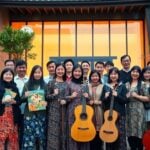In the realm of grant proposals, the concept of impact serves as a cornerstone for securing funding and support. Funders are increasingly looking for projects that not only address immediate needs but also create lasting change within communities or fields of study. The impact of a project can be understood as the tangible and intangible effects it has on its target audience, environment, or sector.
This multifaceted nature of impact encompasses various dimensions, including social, economic, environmental, and educational outcomes. As such, articulating the potential impact of a project is not merely an exercise in persuasive writing; it is a critical component that can differentiate a successful proposal from one that falls flat. Understanding the significance of impact in grant proposals is essential for both seasoned grant writers and newcomers alike.
The ability to clearly define and communicate the anticipated outcomes of a project can significantly enhance its appeal to potential funders. In an increasingly competitive landscape, where numerous organizations vie for limited resources, demonstrating a well-thought-out impact strategy can be the deciding factor in whether a proposal is funded. Therefore, it is imperative for grant writers to not only grasp the importance of impact but also to develop a comprehensive approach to identifying, measuring, and communicating it effectively throughout their proposals.
Key Takeaways
- Impact is a crucial aspect of grant proposals, demonstrating the value and effectiveness of a project.
- Clearly identify and define the specific impact your project aims to achieve, considering both short-term and long-term outcomes.
- Use measurable indicators and evaluation methods to assess the impact of your project, providing evidence of its effectiveness.
- Communicate the potential impact of your project persuasively in your proposal, highlighting its significance and relevance.
- Incorporate real-life examples and testimonials to illustrate the potential impact of your project, making it more tangible and relatable to funders.
- Demonstrate the sustainability and long-term impact of your project, showing how it will continue to make a difference beyond the grant period.
Identifying and Defining Your Project’s Impact
Understanding Project Goals and Objectives
The first step in articulating a project’s impact is to identify and define what that impact will be. This process begins with a thorough understanding of the project’s goals and objectives. By clearly outlining what the project aims to achieve, grant writers can begin to map out the specific impacts that will result from its implementation.
Anticipating Project Outcomes
For instance, if a project is designed to improve literacy rates among children in underserved communities, the anticipated impact might include not only improved reading skills but also enhanced self-esteem, better academic performance, and increased opportunities for future success. Each of these outcomes contributes to a broader narrative about the project’s significance and relevance.
Considering Direct and Indirect Impacts
Defining impact requires a nuanced approach that considers both direct and indirect effects. Direct impacts are those that are immediately observable and measurable, such as the number of children who improve their reading levels after participating in the program. Indirect impacts, on the other hand, may take longer to manifest and can be more challenging to quantify. These might include changes in community attitudes toward education or shifts in parental involvement in children’s learning processes. By taking into account both types of impacts, grant writers can present a more comprehensive picture of their project’s potential benefits, thereby enhancing its attractiveness to funders.
Measuring and Evaluating Impact

Once the anticipated impacts have been identified and defined, the next crucial step is to establish a framework for measuring and evaluating those impacts. This involves developing specific metrics and indicators that will allow for the assessment of progress toward achieving the project’s goals. For example, if the project aims to increase access to mental health services in a community, relevant metrics might include the number of individuals served, changes in mental health outcomes as measured by standardized assessments, and participant satisfaction ratings.
By establishing clear metrics at the outset, grant writers can ensure that they have a robust system in place for tracking progress and demonstrating success. Evaluation should not be viewed as an afterthought; rather, it should be integrated into the project from its inception. This proactive approach allows for ongoing assessment and adjustment as needed, ensuring that the project remains aligned with its goals and objectives.
Additionally, incorporating both qualitative and quantitative evaluation methods can provide a richer understanding of impact. While quantitative data offers concrete evidence of outcomes, qualitative feedback—such as participant testimonials or case studies—can provide valuable context and depth to the findings. By employing a comprehensive evaluation strategy, grant writers can effectively demonstrate their project’s impact to funders and stakeholders alike.
Communicating Impact in Your Proposal
Effectively communicating impact within a grant proposal is an art form that requires clarity, precision, and persuasive storytelling. The narrative should not only outline the anticipated impacts but also convey why these impacts matter. Funders are often motivated by a desire to make a difference; therefore, proposals should resonate emotionally while also providing logical reasoning for why the project is worthy of investment.
This involves weaving together data-driven evidence with compelling narratives that illustrate the human side of the project—showcasing real people whose lives will be transformed as a result of the funding. In addition to crafting an engaging narrative, visual elements can play a significant role in communicating impact. Infographics, charts, and tables can succinctly present data that supports claims about anticipated outcomes.
These visual aids can help break up dense text and make complex information more accessible to readers who may not have a background in the subject matter. Furthermore, including testimonials or quotes from stakeholders can add authenticity to the proposal, reinforcing the message that the project has already garnered support from those it aims to serve. By combining strong narrative techniques with effective visual communication, grant writers can create proposals that leave a lasting impression on funders.
Incorporating Real-life Examples and Testimonials
One of the most powerful ways to illustrate impact in a grant proposal is through real-life examples and testimonials from individuals who have experienced or benefited from similar projects. These narratives serve as compelling evidence of a project’s potential effectiveness and can humanize abstract concepts related to impact. For instance, sharing stories from past participants who have successfully improved their skills or achieved personal goals as a result of similar initiatives can create an emotional connection with funders.
Such anecdotes not only highlight the tangible benefits of the project but also demonstrate its relevance within the community or target population. Incorporating testimonials from community leaders or stakeholders can further bolster a proposal’s credibility. When respected figures within a community endorse a project based on their firsthand experiences or observations, it lends weight to the claims made within the proposal.
These endorsements can serve as powerful validation of both the need for the project and its anticipated impact. By weaving together personal stories with broader data-driven evidence, grant writers can create a rich tapestry that illustrates not only what will happen if funding is secured but also why it matters deeply to those involved.
Demonstrating Sustainability and Long-term Impact

Demonstrating Sustainability and Long-Term Impact
Demonstrating sustainability and long-term impact is crucial for convincing funders that their investment will yield lasting benefits beyond the initial funding period. Funders are increasingly interested in projects that have a clear plan for continuation after grant funds have been exhausted. This might involve outlining strategies for securing additional funding through partnerships, community engagement, or revenue-generating activities.
Reassuring Funders with a Well-Thought-Out Sustainability Plan
By presenting a well-thought-out sustainability plan, grant writers can reassure funders that their investment will not only address immediate needs but also contribute to ongoing positive change. Moreover, articulating long-term impact requires projecting how the benefits of the project will continue to unfold over time. This could involve discussing how improved literacy rates among children will lead to better educational outcomes in high school and beyond or how increased access to mental health services will contribute to overall community well-being in future years.
Conveying Value and Positioning Proposals for Success
By painting a picture of sustained impact that extends well beyond the life of the grant, writers can effectively convey the value of their project in terms that resonate with funders’ long-term goals for social change. In doing so, they position their proposals as not just requests for funding but as opportunities for meaningful investment in a better future.
When preparing your grant proposal and focusing on demonstrating impact, it’s crucial to align your objectives with the goals of potential funding sources. A related article that can provide further insights into this topic is the “CFPs: TDR Impact Grants Scheme for Operational Implementation Research.” This grant scheme specifically looks for projects that can show significant operational and implementation impacts in the field of infectious diseases of poverty. Understanding the criteria and expectations from such grants can enhance how you articulate the impact in your own proposals. For more details, you can read about the grant scheme [here](https://fundsforindividuals.fundsforngos.org/grants/cfps-tdr-impact-grants-scheme-for-operational-implementation-research/).
FAQs
What is a grant proposal?
A grant proposal is a formal request for funding from a government agency, foundation, corporation, or other entity. It outlines a project or program and explains how the funding will be used to achieve specific goals.
What is impact in a grant proposal?
Impact in a grant proposal refers to the measurable outcomes and benefits that will result from the funded project or program. It demonstrates the value and effectiveness of the proposed work.
Why is it important to show impact in a grant proposal?
Showing impact in a grant proposal is important because it helps funders understand the potential benefits of investing in the proposed project or program. It also demonstrates accountability and transparency in how the funding will be used.
How can impact be demonstrated in a grant proposal?
Impact can be demonstrated in a grant proposal by clearly outlining the specific goals and objectives of the project or program, providing evidence-based strategies for achieving those goals, and describing the expected outcomes and benefits for the target population or community.
What are some tips for showing impact in a grant proposal?
Some tips for showing impact in a grant proposal include using data and evidence to support the proposed project or program, aligning the goals and objectives with the funder’s priorities, and clearly articulating the long-term benefits and sustainability of the proposed work.


























